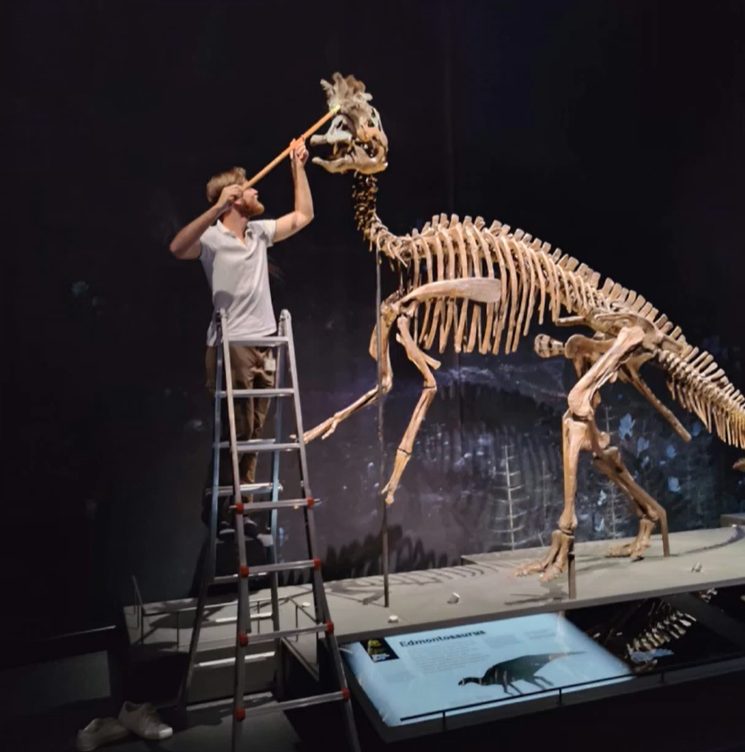Alex von der Becke, our UK staff member, recently attended the Natural Science Collections Association conference in Oxford. He reports back on one of the more practical talks which was entitled, “Dust in the wind: how to design exhibits with an eye for their upkeep.”
This talk was presented by Becky Dejardins of the Naturalis Museum, Netherlands and was split into two sections. The first part covered aspects you should consider when designing a new exhibit; the second how to take ongoing care of your building or exhibition.
Part 1: Design Considerations
Air flow
The first thing to consider is air flow. This is affected by the size of the room and the number of people in it. Areas where air is coming out tends to be dustier than other areas. She therefore suggests not placing items which are challenging to clean right next to an airflow output.
Surfaces
The second things to consider is surface materials. Good surface materials are painted wood, MDF, glass and tiles (though grout can be tricky). Bad surface materials are unfinished timber, cement or oil-based paint.
Lights and sound
Good work lights are key, particularly if you are using a ladder. Having plenty of electrical outlets/sockets is useful if you are using a corded vacuum cleaner. If there is a soundscape, can you turn it off easily without affecting other areas? Having to listen to repetitive audio whilst cleaning will drive you nuts!
Paint colour
Her favourite colour is dust grey because it is best at hiding dust! In general dark colours work best for plinths, walls and platforms.
Dust traps
Avoid dust funnels (like circular displays with open tops), gaps, dips and channels in your display structure since dust settles.
Hard to get into areas including display cases
Ask yourselves these questions: how hard is it to open? Who opens it and how often? Are there records of how to get into these places?
Part 2: You have a beautiful exhibit… now what?
First off, put together an integrated cleaning plan. This should include the following elements:
Who will do the cleaning?
This can vary from museum to museum. Internal cleaning can include collections staff in the case of collections material. Or you may use external cleaners. At Naturalis, Becky created a cleaning rota for staff.
How often do you need to clean?
As well as regular cleaning, the busiest halls will require additional cleaning after school holidays. Avoid cleaning during busy periods.
Who should be involved?
When making decisions about cleaning involve the whole museum including cleaners, technical team, front-of-house staff, and so on.
What equipment is needed?
Mops, dusters, vacuum cleaners, dust masks, shoe covers, lifts/platforms/steps/ladders.
How to clean?
Start from the top and work your way down.
Remember where the objects go!
Take photos before emptying cases so that you know how to replace the items correctly.
Takes time and bribes
Make it a friendly, team experience: play music whilst you clean and share home baking as a reward.
Social media
Share photos and videos with your marketing team since people love seeing dinosaurs being cleaned with a feather duster! Even the people involved in cleaning may share what they are doing on their personal social media channels.
Becky then concluded with the words: “and with that my talk is done and dusted”.
